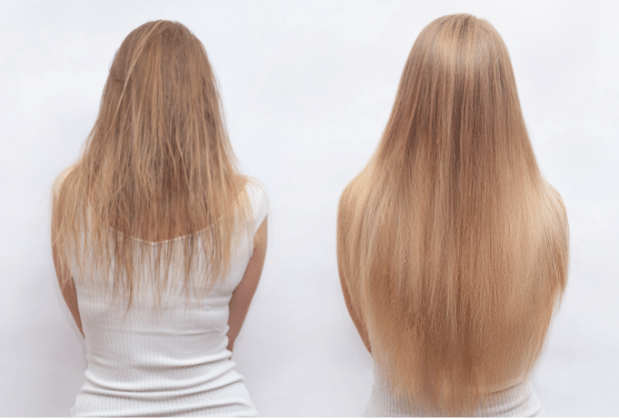Hair Loss Treatment Successful treatments for certain sorts of balding are available. You could possibly turn around going bald, or if nothing else moderate it. For certain conditions, like inconsistent balding (alopecia areata), hair may regrow without treatment inside a year. Medicines for balding incorporate prescriptions and medical procedures.
What is hair loss and over view of hair loss?
hair loss can affect not just your scalp or your entire body, and hair loss can be temporary or permanent. It can occur due to many reasons some of which are heredity, changes in the hormone, medical history, or aging. Anyone can lose hair on their scalp, but it’s more common in men.
Baldness is a condition in hair fall typically refers to excessive hair loss from your scalp. Hereditary hair fall due to age is the most common cause of baldness. Some patients prefer to let their hair loss run its course without treatment and unhidden.
Before taking hair loss treatment, you have to discuss with your hair doctor specialist the condition of your hair loss and treatment options.
Signs and symptoms of hair loss may include:
Step-by-step thinning on top of the head. This is the most common type of hair loss, affecting people as they grow up. In men, hair specially begins to recede at the hairline on the forehead. Women generally have a broadening of the part in their hair. A gradually common hair loss pattern in aged women is a receding hairline ( frontal fibrosing alopecia).
• Indirect or patchy bald spots. Some people lose hair in indirect or patchy bald spots on the scalp, beard, or eyebrows. Your skin may come itchy or painful before the hair falls out.
• unexpected loss of hair. A physical or emotional shock can affect hair to loosen. couples of hair may come out when combing or washing your hair or indeed after gentle lugging. This type of hair loss generally causes overall hair thinning but is temporary.
• Full-body hair loss. Some conditions and medical treatments, like chemotherapy for cancer, can affect the loss of hair each over your body. The hair generally grows back.
• Patches of scaling that circulate over the scalp. This is a sign of ringworm. It may be accompanied by broken hair, reddishness, swelling, and, at times, oozing.
How do dermatologists find out what’s causing hair loss?
To check the main cause of hair loss, a dermatologist or hair doctor specialist starts your treatment by gathering information. Your hair doctor specialist will:-
- Ask some questions. It’s important to know the ways how hair fall comes whether it come fast or slowly.
- With some medical equipment doctor can look at your scalp, nails, any other area with hair loss. This examination provides a complete report for what’s happening.
- Inspecting the health of your hair. Gently pulling on your hair tells your hair doctor specialist a lot about how your hair condition is growing and whether it’s prone to breaking.
If your hair doctor specialist detects that the cause of your hair loss could be a disease, vitamin deficiency, hormone imbalance, or infection, you may need a blood test or scalp biopsy. These tests can help to detect the main cause of hair fall.
Once your hair doctor specialist has this information, it’s often possible to tell you what’s causing your hair loss.
Sometimes, your dermatologist needs more information. This might be rare if the patient has more than one cause.
When to see a hair doctor specialist?
See your hair doctor specialist if you’re upset by patient hair loss in you or your child and want to pursue treatment. For women who are feeling a receding hairline ( anterior fibrosing alopecia), talk with your hair doctor specialist about early treatment to avoid significant endless baldness. Also, talk to your hair doctor if you notice unexpected or patchy hair loss or other than usual hair loss when combing or washing your hair or your child’s hair. unexpected hair loss can signal an beginning medical condition that requires treatment.
Causes of hair loss ?
People typically lose 50 to 100 hairs a day. This usually isn’t noticeable because new hair is growing in at the same time. hair loss occurs when new hair doesn’t replace the hair that has fallen out.
MEDICINE
In the event that your balding is brought about by a hidden infection, treatment for that sickness will be important. In the event that a specific prescription is causing the going bald, your PCP may encourage you to quit utilizing it for a couple of months.
Prescriptions are accessible to treat design (innate) hair sparseness. The most widely recognized choices include:
Minoxidil (Rogaine). Absurd (nonprescription) minoxidil comes in fluid, froth and cleanser structures. To be best, apply the item to the scalp skin once every day for ladies and twice day by day for men. Numerous individuals favor the froth applied when the hair is wet.
Items with minoxidil assist numerous individuals with regrowing their hair or moderate the pace of balding or both. It’ll require at any rate a half year of treatment to forestall further going bald and to begin hair regrowth. It might require a couple of more months to tell whether the treatment is working for you. On the off chance that it is helping, you’ll need to keep utilizing the medication inconclusively to hold the advantages.
Conceivable results incorporate scalp aggravation and undesirable hair development on the nearby skin of the face and hands.

When hair may regrow on its own?
Yes, your hair may regrow on itself. Reasons for temporary hair loss are some of these if you have recently:
- Had a baby
- have a major illness or had surgery
- Underwent cancer treatment
- Lost weight of 20 pounds or more
if you have alopecia areata, which causes your immune system to attack your hair follicles
Your hair doctor can tell you whether your hair may start to grow again on its own.
Sometimes to see regrowth without any treatment, you need to make some changes.
CONSULT OUR HAIR EXPERTS
Procedures to help regrow hair
While at-home treatments offer comfort, a procedure performed by a well-experienced hair doctor specialist or dermatologist tends to be more effective. For this reason, your hair doctor may include one of the following in your treatment process.
- Injections of corticosteroids
- Hair transplant
- Laser therapy
- Platelet-rich plasma (PRP)
Prescription medication that can regrow hair
Another treatment option is to take custom medication. The type of medication specified will depend on your
- Hair loss cause
- Overall health
- Age
- Expected results
- Plans for getting pregnant
With any medicine, side effects are possible. Ask your hair doctor specialist about possible side effects that you might witness while taking one of these specifics to treat hair loss.
Vitamins, minerals, and other supplements used in hair loss?
After getting your blood test report if the hair doctor specialist thinks you’re not getting enough biotin, iron, or zinc, the doctor may recommend you to take a supplement. If a doctor thinks you do have not enough protein, your hair doctor suggests you how to boost up.
You should only take supplements ( biotin, iron, or zinc ) when you needed or when your blood test shows that you have a deficiency. If your levels are in normal range, taking a supplement can be harmful to you.
Other supplements meant to help with hair loss contains a lot of nutrient. Because this can help you get the nutrient, many hair doctor specialist recommend taking a multivitamin instead.
Changing your hair care (or hairstyle) may help
Some hairstyles and hair care habits can damage your hair, leading to hair loss. However, your hair doctor specialist can advise changes that will help you stop damaging your hair, If your hair doctor finds that this may be causing your hair loss.
When do dermatologists recommend treatment for hair loss?
It is possible to regrow hair on its own, your hair doctor gives you some treatment that helps you to grow hair more quickly. Sometimes, treatment is very important to prevent further hair loss. There are many hair fall treatment plans.
Male Pattern Hair Loss
In men, hair loss can begin any time after puberty and progress over the course of time or decades. It starts above the tabernacles and continues around the edge and the top of the head, frequently leaving a ring of hair along the bottom of the scalp. Numerous men with manly pattern hair loss ultimately come bald.
Female Pattern hair Loss
In women, the hair slowly thins each over the scalp, but the hairline generally doesn’t recede. Some women see this type of hair loss as a natural or after some age, although hair loss may begin any time after puberty. Female pattern hair loss can beget hair to thin dramatically, but only infrequently does it lead to baldness.
faq
True. Losing of some hair every day is normal. Losing up to 100 hairs a day is normal and does not mean your hair falls. The scalp has billions of hair follicles, most of which are producing hair at the moment and some are not.
False. It is not true that baldness is inherited through a mother’s male relatives. Actually, baldness can come from either side of the family or both. Looking at your family can give you at best an educated guess about how you will turn out.
Yes. Hair can be taken from the donor area regions in the rear and on the sides of the scalp is genetically programmed to continue growing over the course of a lifetime without being affected by pattern baldness. The transplanted hair will continue to grow for life as long as the donor’s hair remains vigorous and viable.
Thyriod disease. Several health conditions, including thyroid disease and iron deficiency anemia, can cause hair loss.
Alopecia areata is a condition in which the body attacks its own hair follicles. Alopecia areata usually starts as a single small circle of perfectly smooth baldness. Patches usually regrow in 3-6 months without treatment. Sometimes, hair grows back in white. Alopecia can also produce two or three bald patches.
Three. Human hair naturally grows in three phases: anagen, catagen, and telogen.

